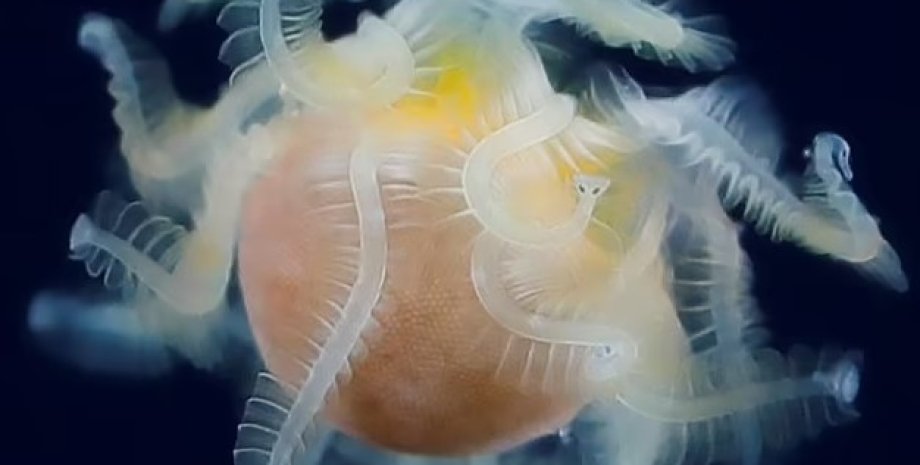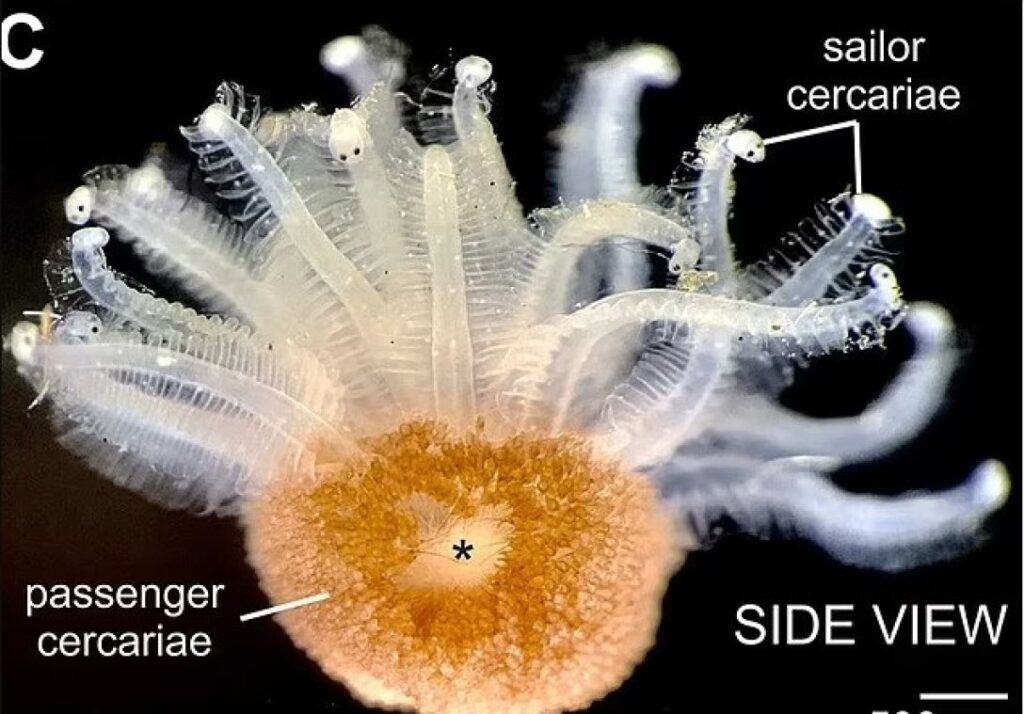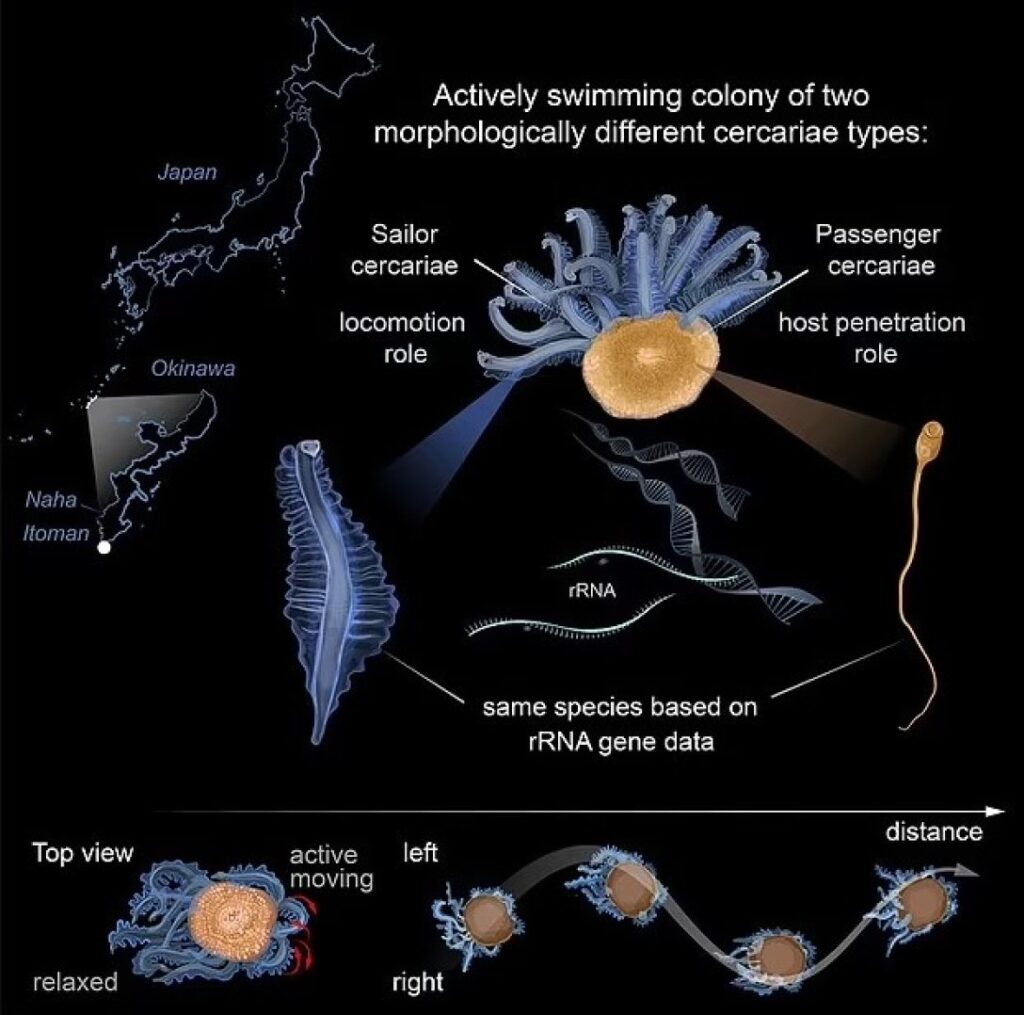
An unusual marine creature that has no similar analogues on Earth was first discovered off the coast of Japan in 2018. Scientists have studied this creature and its thousands of organisms in the form of sperm in the “belly” in detail, but have not been able to give an exact definition of its nature.
It took 5 years for scientists to finally solve the mystery of this mysterious tiny sea swimmer. At first, the scientists believed that they were looking at a worm, crustacean, or mollusk that had never been seen before, but then a team of researchers from the University of Vienna conducted a deeper analysis.
The results showed that the mysterious animal is a colony of two parasitic worm larvae swimming as one. Scientists found that all the appendages of this “alien” are separate organisms attached to a lump with more than 1,000 passengers on board. Previously unknown organisms were named “sailors”. Scientists realized that the parasites had created a prey-like fin so that it could infect the intestines of an unsuspecting host.
It should be noted that the mysterious organism was discovered by Japanese underwater photographer Re Minemizu, who discovered a mysterious creature no bigger than a ladybug at a depth of about 16 meters while diving off the coast of Cape Kiyan in Okinawa.

Initially, the photographer posted the image on his account, which aroused the interest of hundreds of biologists who were unable to identify it. After that, neuroscientist Igor Adameiko from the University of Vienna contacted Minemizu for the sample, and he and his team managed to solve the mystery of the mysterious creature.
The team conducted an in-depth analysis, which showed that the passengers and the “sailors” themselves belong to the digenean family Acanthocolpidae, probably the genus Pleorchis. This type of flatworm usually affects the intestines. It should be noted that the researchers also conducted a DNA test, which showed that the “sailors” and passengers belong to the same species.
The authors of the study note that the body of passengers is stocky, with a collar-like thickening in the anterior part, while the body of sailors is flattened in the dorso-ventral direction. The team believes that passengers are the causative agent of the infection, while the “sailors” simply act as parasite transporters to the host body.

The study also showed that the passengers had different modes of collective activity: they could beat their tails in synchronization, causing pulsating or jumping movements. As a result, they looked like a swimming animal, which could attract other sea creatures.
The authors of the study also found that sailors do not have penetration organs, and therefore assumed two scenarios. First, they can sacrifice themselves to ensure passenger transportation. Secondly, the “sailors” can continue to live in the fish that swallow this “floating lump”.

